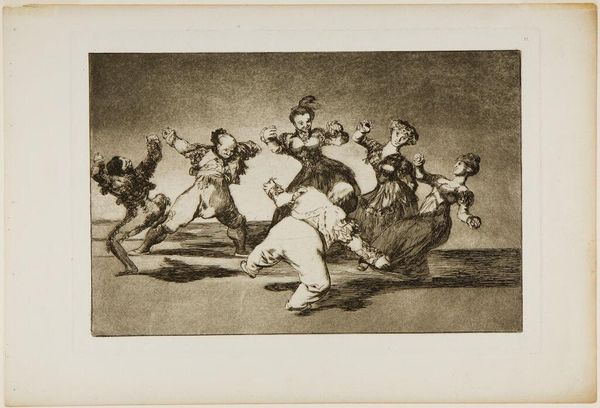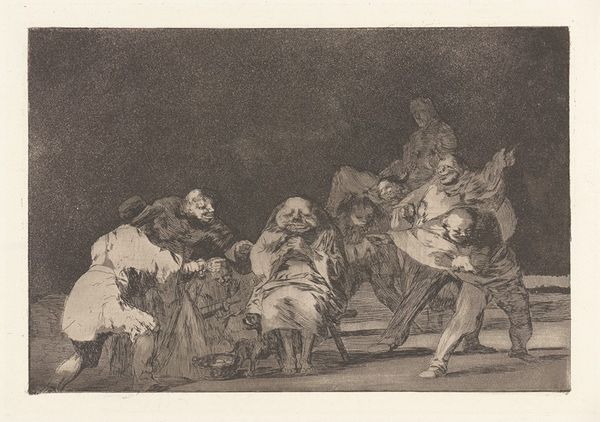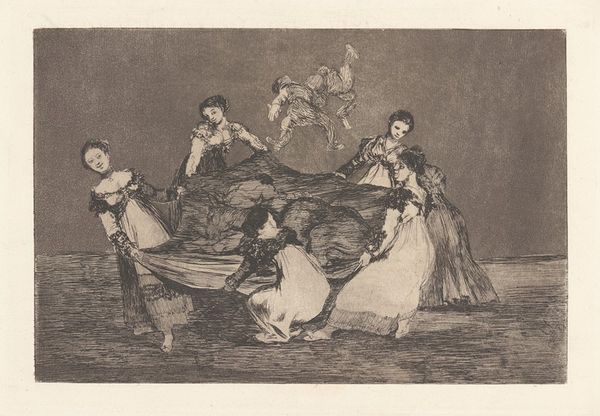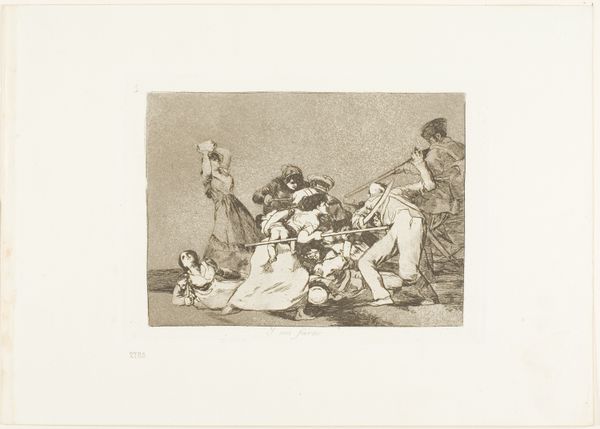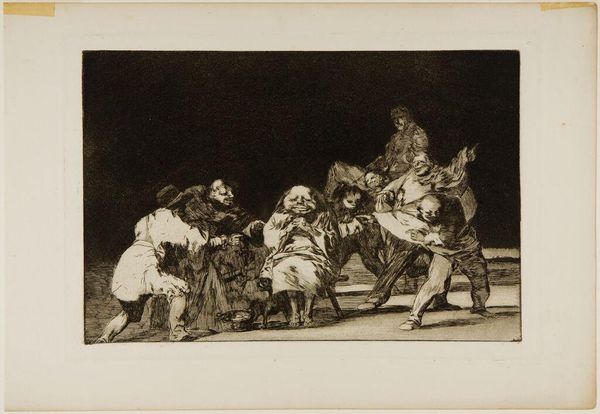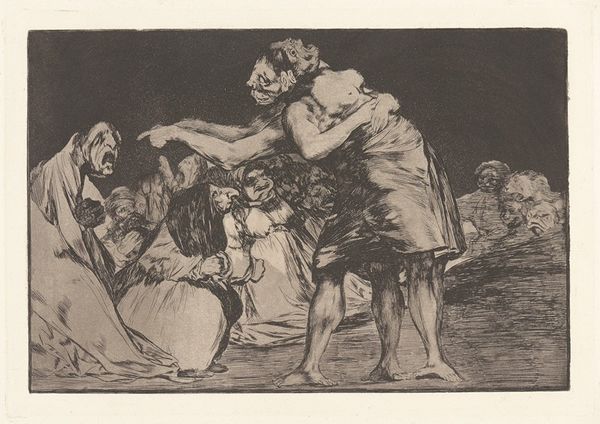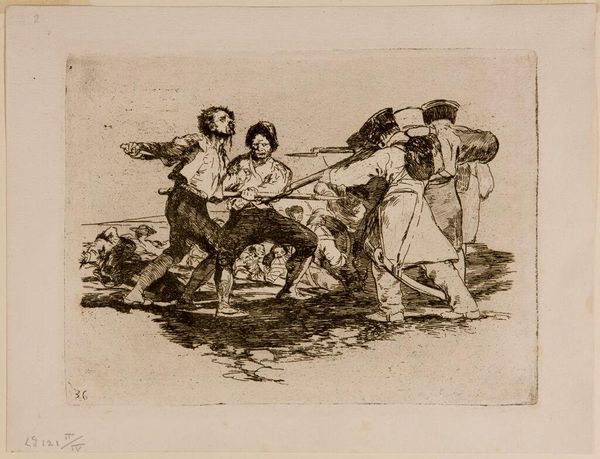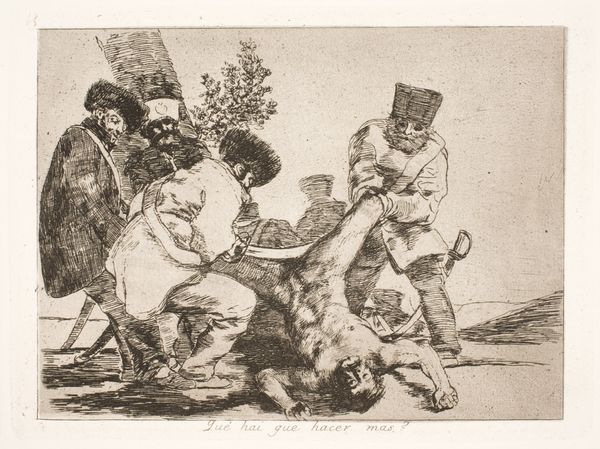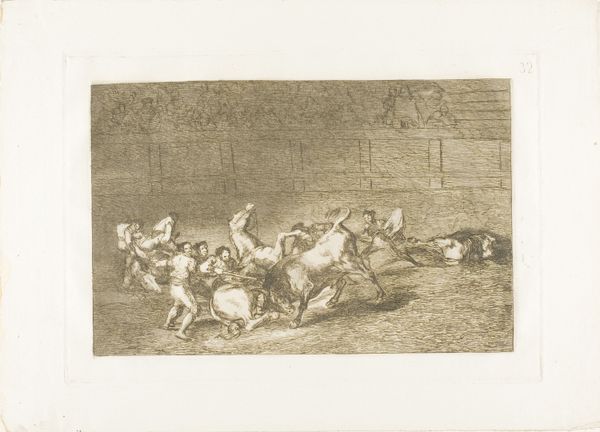
If Marion Will Dance, then She Will Have to Take the Consequences c. 1813 - 1820
0:00
0:00
aquatint, print, etching
#
portrait
#
aquatint
#
narrative-art
# print
#
etching
#
caricature
#
romanticism
#
genre-painting
#
history-painting
Copyright: Public Domain: Artvee
Curator: The dynamism in this print really grabs your attention immediately. Editor: Absolutely. The sense of frenzy is palpable. It feels almost apocalyptic. But let’s provide some context. What we’re looking at is Francisco de Goya's “If Marion Will Dance, then She Will Have to Take the Consequences,” created sometime between 1813 and 1820. He used aquatint and etching, creating this incredibly textural surface. Curator: Aquatint is crucial here; it enables those broad tonal washes that give the scene its almost dreamlike quality. Think about the laborious process: the acid baths, the stopping out. It underscores the intense effort behind even what seems spontaneous. How fascinating that this elaborate and physically intensive mode of production translates into such fluid energy on the page. Editor: The imagery is captivating. What are they dancing? Or are they fighting? The blurring between performance and violence fascinates me. Note the costumes—suggestive of a sort of commedia dell'arte, maybe even the Spanish theatre. I keep wondering about Marion; is she a real person, or a representation of something more profound, perhaps the concept of unrestrained freedom? Curator: I think both. But looking closely at those garments and textures reveals details of production techniques from that era; that attention is key here because that provides us with social data beyond just "high art". How many steps it takes to generate that level of artistry shows value placed in creation...a clear departure when measuring contemporary aesthetics focused mainly with fast production speeds due accessibility as most important element today’s artist pursuit instead prioritizing high detailed artisanship practices prevalent amongst painters, sculptors etc, that had significant value by way prestige since labor always mattered immensely for those masters through history! Editor: An excellent point! Considering the context of post-Napoleonic Spain – an unstable political era marked through considerable chaos which certainly infused symbols by cultural concerns during that specific age by artists who actively used history & genre, along romantic undertones for this composition itself...makes sense concerning their unique reflection considering they witnessed what became revolutionary times throughout our cultures during what developed politically turbulent contexts amidst societies constantly wrestling between past memories whilst navigating unprecedented ways moving swiftly toward its prospective landscapes soon become entirely reshaped into present form!! What lasting effects this has across both imagery and making... Curator: It leaves questions which remain valuable considerations to examine further. Thank you. Editor: Indeed; now our journey should focus deeper analysis and thought considering elements highlighted currently by present minds; how wonderfully our past communicates if listened deeply!.
Comments
No comments
Be the first to comment and join the conversation on the ultimate creative platform.
